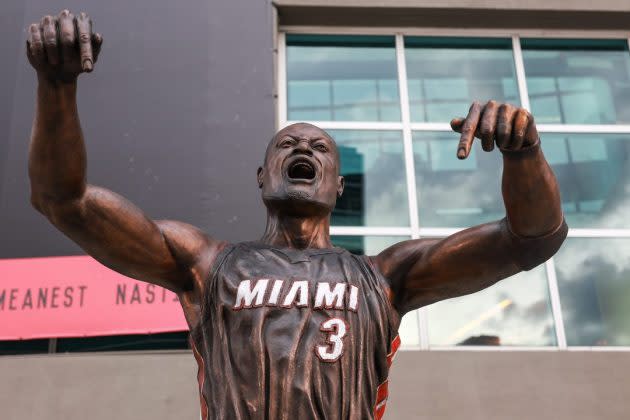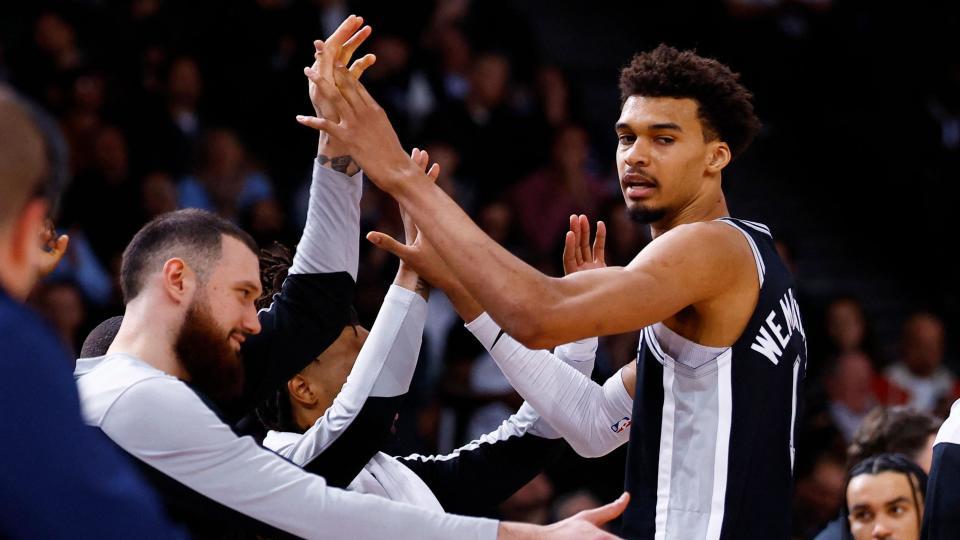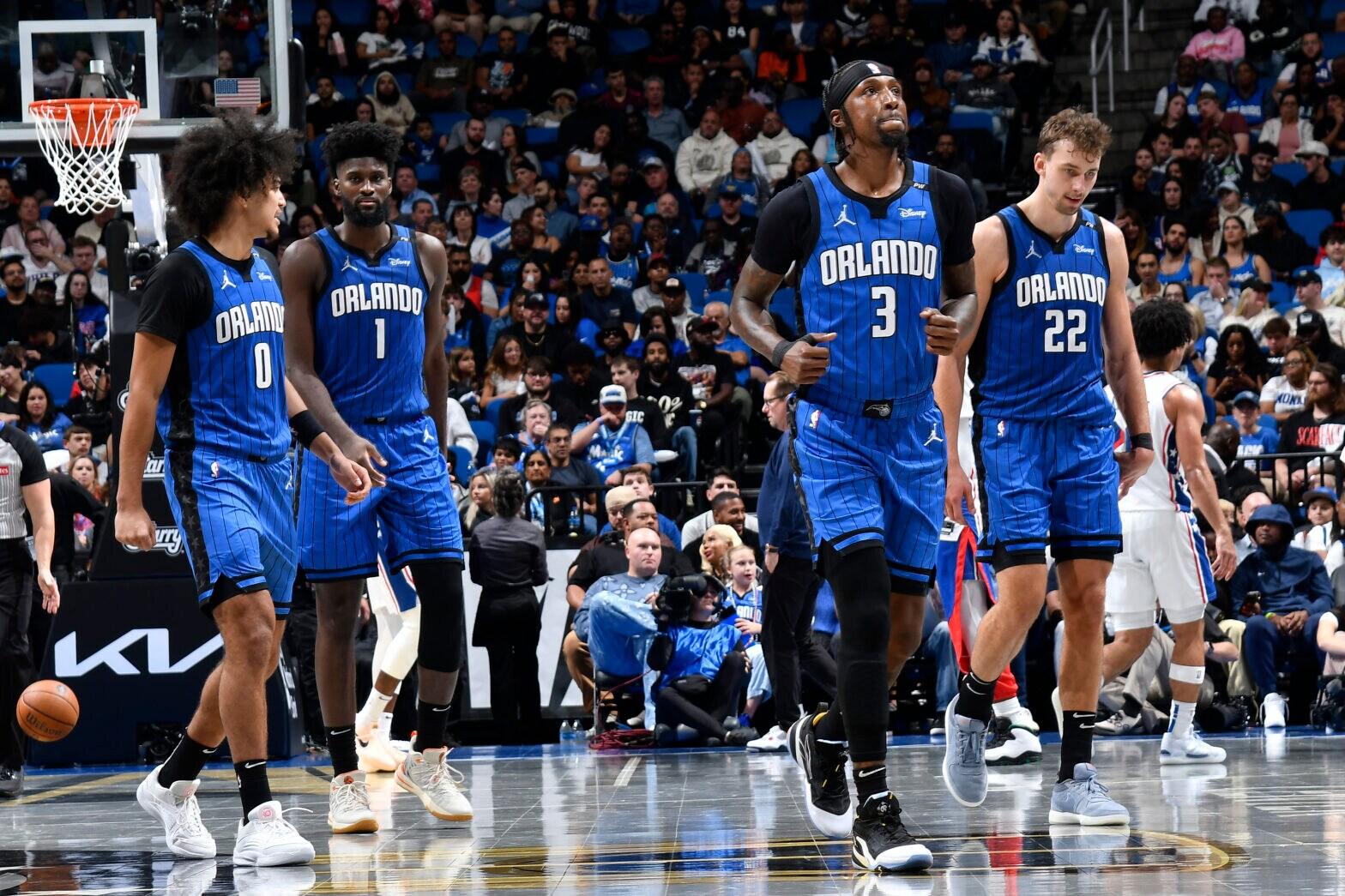Controversy Surrounds Dwyane Wade's Sculpture as He Reflects on Reaction to Michael Jordan Bronze
Highwood, Ill.—Having recently attended the unveiling of the Dwyane Wade statue outside the Kaseya Center in Miami, artist Omri Amrany returned to his suburban Chicago art enclave the next day, already deeply engrossed in his upcoming projects.

“I don’t check the comments at all—one of the many things that I don’t do—because I keep my brain open for dreams and opportunities and for looking forward,” he told a reporter, while standing in the front hallway of the fine art studio he and his wife, Julie Rotblatt Amrany, have operated in this space since 2005.
More from Sportico.com
CHSN and Comcast Negotiate as Blackhawks Fans Miss Games
Rare Michael Jordan Jersey Up for Auction, Valued at $4-6M
Robinhood Inks Third NBA Jersey Patch Deal via Klutch Sports
A sign on the front door of the red-bricked building read: “We are sorry we cannot invite you inside, as we are hard at work sculpting several proprietary projects.”
But on Wednesday afternoon, Amrany agreed to invite Sportico into studio under the condition that none of its in-progress projects, which include those of other famous sports figures, would be reported on or photographed.
Over the previous 48 hours, the Wade sculpture had been subjected to a kind of name, image and likeness debate among sports fans: namely, whether the statue’s expression of open-mouthed primacy captured Wade’s essence. The verdict, according to the trending hordes on social media—and self-appointed art critics like Charles Barkley and Shaquille O’Neal—was that it had failed.
On their Inside the NBA show on TNT, Barkley suggested the statue should be taken down and redone. Shaq decried it as the “scariest thing this Halloween,” apparently unaware that he was insulting the work of a man who had previously memorialized him in bronze.
The object of their ridicule was designed to capture Wade’s demonstrative reaction to hitting a game-winning 3-pointer at the buzzer for the Miami Heat in a 2009 home victory against the Chicago Bulls, his hometown team. After making the shot, Wade leapt atop a sideline scorers’ table of what was then called American Airlines Arena, while shouting “this is my house” at an adoring crowd. Wade, who retired from basketball in 2019, has referred to this as his “favorite individual moment of my career.”
For his part, Wade has rallied to the statue’s defense, saying it lived up to his vision.
“The commission (of art) is a triangle between the client, the subject, and the artist,” said Amrany, who worked on the project along with Oscar Leon, one of seven artists who work out of the Rotblatt Amrany studios. “And the end result of this triangle is likely to stand on a pedestal to be reviewed by the rest of the world.”
Here’s what Amrany hopes the world will eventually come to understand: the purpose of the sculpture was not meant to be a product of portrait realism, but to capture the essence and story behind the subject. The sculptor insists he has no problem with criticism of his work, but thinks his recent detractors have failed to gasp this distinction.
“They’re missing the whole story of a child who had nothing, who became everything, and that was his expression when he jumped on the table and told his hometown team, ‘This is my house,’” Amrany said. “This is a wonderful American story, which they are missing because what they want is a very boring face. And I’m sorry, they’re not going to get it from me.”
Wade’s sculpture was unveiled almost 30 years to the date of Amrany and his wife’s most famous sports creation, the Michael Jordan statue at the United Center. Known as “The Spirit,” the figure of a mid-flight MJ helped launch the sports cast metal subgenre and became the Rotblatt Amrany studio’s calling card. Amrany said the Bulls paid $250,000 for the commission, but he did not say how much the Heat paid for Wade.
In the three decades since conjuring The Spirit, the Rotblatt Amrany studio has produced bronze statues to commemorate the accomplishments of Kobe Bryant, Barry Sanders, Dirk Nowitzki, Bob Cousy, David Beckham, Elgin Baylor, Wilt Chamberlain, Bobby Hull, Vince Lombardi and the aforementioned Shaq, among many other notable athletes and coaches. In all, the studio has done over 300 projects around the globe, from individual busts to municipal parks.
But as Amrany recalled, when the Jordan statute was publicly unveiled at a press conference on Nov. 1, 1994, it was not roundly greeted with praise. Rather, there were a number of initial complaints from the public and media over the way it portrayed Jordan’s face, including the decision to keep the Hall of Fame’s famously wagging tongue concealed behind his lips.
“They didn’t like that his face wasn’t right off a cereal box,” said Amrany. “They didn’t want what (Jordan) said he wanted. And they didn’t know that, because they were not meeting him, they did not sit with him.”
Mercifully, that experience long predated the era of social media and the current “world of algorithms,” as Amrany puts it. The peanut gallery is infinitely more critical and voluble in 2024.
“I mean, after 20 articles (about Wade’s sculpture) in the last three days,” Amrany said, “what you become is not famous, but infamous.”
Though undaunted, he said he had taken note of the experience for future reference.
“Maybe even next time I would suggest to the (subject) that they be aware of what (reaction) you’re going to get,” Amrany said.
Best of Sportico.com
NHL Franchise Valuations Ranking List: From Maple Leafs to Blue Jackets
NWSL Franchise Valuations Ranking List: From Angel City FC to Chicago Red Stars
Tennis Prize Money Tracker 2024: Which Player Has Earned the Most?
Sign up for Sportico's Newsletter. For the latest news, follow us on Facebook, Twitter, and Instagram.
View comments
RELATED STORIES






LATEST NEWS







